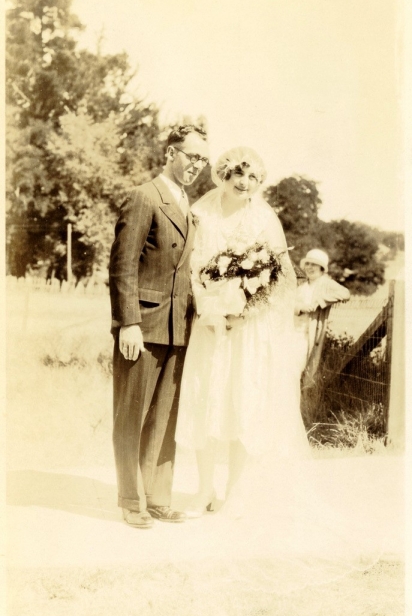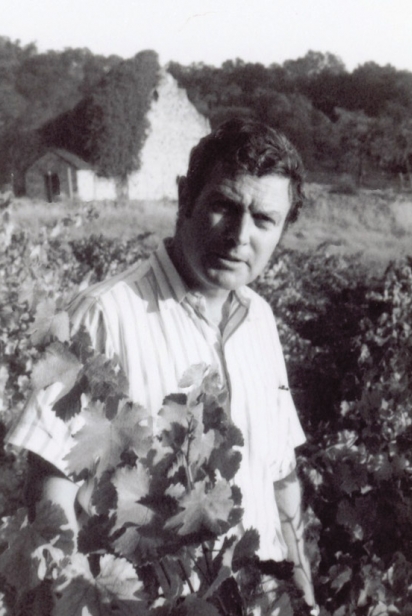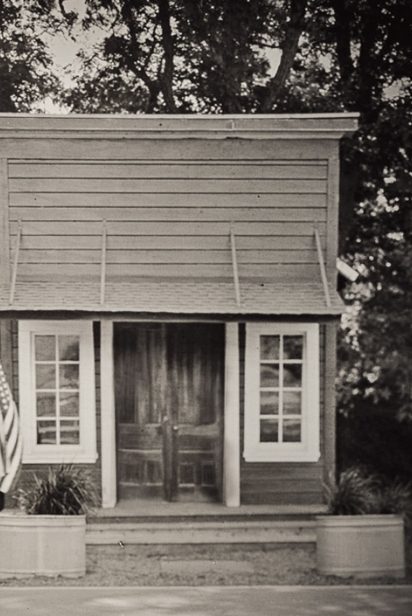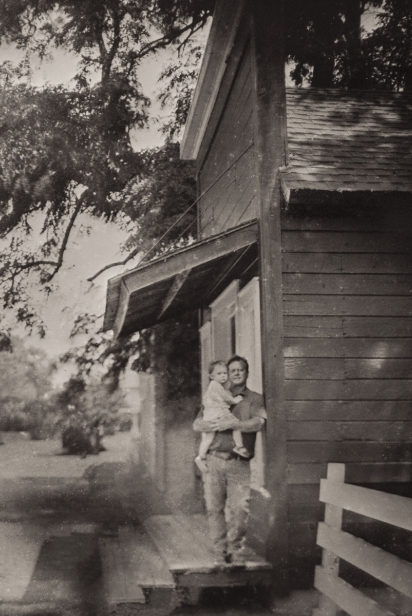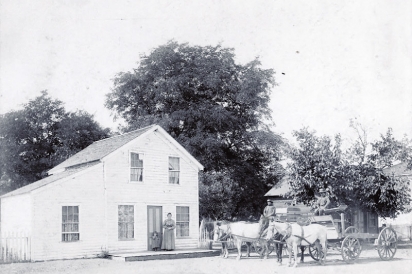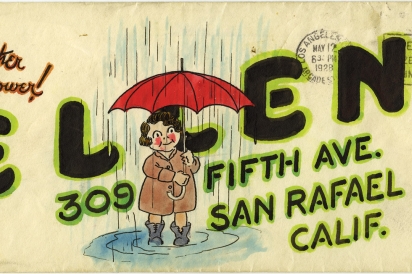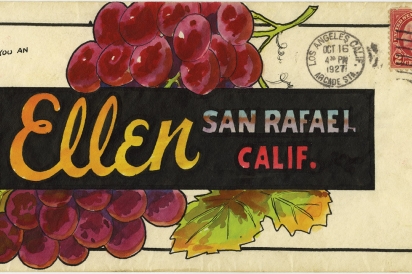A Family Legacy That Still Delivers
PATRICK MCNEIL’S WINES THAT DELIVER
Nicasio, according to Patrick McNeil, is the center of Marin County.
Patrick grew up near the beaches of Southern California, but his connection to the historic community extends back generations—to pioneering ranchers and entrepreneurs who helped put the bucolic village on the Bay Area map.
The same map backs his claim: This census-designated place, population 71 (in 2019), lies at the county’s geographic heart. Nicasio is also the center of his universe.
“Everything I do now is about preserving my family history,” he said in a phone interview. “I’m sharing it with people in a way that truly connects them to the Nicasio of old.”
Patrick was drawn permanently north by the wine business after graduating from UC Davis in 1996. For the first few years of his life, he and his parents lived on the historic Stags’ Leap property in Napa Valley, which his attorney father, the late Joseph McNeil, had purchased in a partnership with Carl Doumani in 1970.
“Joe Jr.’s” business connections and encouragement helped direct his son to a job in wine distribution. This would eventually lead to the integrated sales, marketing and winemaking career Patrick pursues today.
Growing up, the 47-year-old spent summers and holidays visiting Redding Ranch, his family’s hereditary property in Nicasio Valley. Patrick; his wife, Amy; and their young son—also Joseph, one of many in the family—today live in Nicasio. Just down the road, the ranch is home base for their day-today lives. His mental map of its contours is both detailed and colorful.
“A long time ago, it was funny,” he shared during our call right after the New Year, “we would park the station wagon and slosh through, like, a hundred yards of mud and cow shit just to get to a cabin that had an outhouse, one light bulb, no heat and one side of the building that was completely gone. And you couldn’t go upstairs because you’d fall through.”
“There was always something to do—hunting, camping and working. That whole ethic was alive and well up there.” Then he laughed, “Visits became more frequent once we actually had electricity!”
The family referred to this ramshackle cabin as the “Nicasio Tiltin Hilton.” Patrick’s paternal grandmother, Ellen Redding McNeil, moved into it from Los Angeles in the late ‘70s with her daughter, Martha.
“When my grandfather passed away in 1976 and my grandmother wanted to move north, my Aunt Martha jumped at the chance to go with her and help establish the homestead,” he said.
Like other rickety old structures he remembers from childhood on the ranch, the Tiltin Hilton would eventually just topple over. The two McNeil women replaced it with a house for sale across the road that they moved to their property.
Ellen spent her last decade on Redding Ranch with her daughter. “Martha’s amazing,” Patrick said of his aunt, now 79 and still living on the ranch. “She’s a local treasure.”
Patrick’s paternal grandparents loom large in his life, as do earlier generations of McNeils and Reddings. The families figure prominently in Dewey Livingston’s 2008 book, Nicasio: The Historic Valley at the Center of Marin. “Each little town and community is unique,” Livingston, who describes himself as one of Marin County’s unofficial historians, said over the phone, “but Nicasio is one of those rare ones where you go through it and you get a feeling that nothing has changed, or very little has changed, over the last century.”
Today, Patrick and his family own the restored 1890s structure that housed Redding & Sons, Ellen Redding’s grandfather’s butcher shop, now painted a cheerful brick red with white trim. With its distinctive square facade, William Redding’s shop wouldn’t look out of place on a cowboy movie set.
Redding and his sons ran a small but successful operation around the turn of the last century. Supplied by local ranches, they sold beef, pork and lamb. Ambitiously for the time, these were “Goods Delivered to Any Part of Marin County,” as reads an early 1900s receipt. The slip of paper is one of many pieces of historic family collateral Patrick treasures. More than a century later, its message echoes through Wines That Deliver, Patrick’s own wine brand.
As a winemaker, Patrick is a proponent of close-to-home Marin County vineyards. He buys fruit from a number of West Marin growers, including McEvoy Ranch and the entirely off-the-grid Stubbs Vineyard. He voiced surprise that more wide-open spaces of the county aren’t planted to grapes. Wedged between the San Pablo and San Francisco bays and the Pacific Ocean, Marin is a unique growing region. “It’s amazing how much that alone creates warmer winters and cooler falls. So you get concentration in the grapes, but you also have all of this lower-alcohol wine. It’s really cool.”
Most Fridays of the year, and especially through the slog of the pandemic, he organizes his wine orders for personal delivery. Labels like Ellen Redding, a Marin County Chardonnay and Pinot Noir named for his grandmother, and Paydirt, a Zinfandel- based homage to his pioneering great-great-grandfather, comprise some of his offerings.
In Redding & Sons fashion, Patrick hits Marin County roads from Novato to the Golden Gate, delivering wine to a largely word-of-mouth list of customers in his city van. In contrast to his great-great-grandfather’s mode of transportation, his horses are under the hood of a Dodge instead of pulling a cart.
Patrick has also incorporated other parts of his family’s history into his own business. He recounted how, in 1926, Ellen Redding and Joe McNeil’s engagement hit a roadblock when his grandfather, working as a commercial artist in San Francisco, was transferred to Los Angeles. For nearly three years, Joe carried out his courtship through the U.S. Postal Service.
Joe drew and hand-colored pictures and notes on envelopes that enclosed dozens of letters to his fiancee, each a whimsical and highly detailed work of art. McNeil’s design for the label of his 2018 Ellen Redding Chardonnay incorporates a July 1927 envelope addressed to his grandmother—two-cent stamp, hand-drawn flowers, nearly century-old postmarks and all.
Patrick has mined his family history over the last decade for Marin-centric nuggets of authenticity. It’s hard to think he hasn’t struck gold.
“That’s kind of the Wizard of Oz part of this,” he said. “It’s like I’ve been searching for the story all this time in life, and it’s just right under my nose. Like, what are my wines going to be about? And here it is, really right under my nose. Like my grandparents literally did all of the hard work through their romance.”
“I’m super-fortunate to have what I do for a living provide a platform for telling these stories,” the winemaker summed up about how the envelopes and other artwork by his grandfather figure into his wine labels and brand storytelling. “Nicasio is all about my family to me. But it’s also about me being the only person who’s got the desire and the ability to actually capture this history and then tell the story from personal experience. And if I weren’t doing it, it wouldn’t happen, and all of this would go away.”
“It’s really a fun process as things unfold and you learn more and more,” observed Dewey Livingston. “And then there are always those things that you never can find out. Sometimes there are just gaps, but you’ve got to live with that.”
For as long as he can remember, Patrick McNeil has engaged enthusiastically with his family’s own rich history in Nicasio and Marin County. Wherever the gaps might be, he’s finding success through his wines, and his stewardship of that history, keeping them filled.



